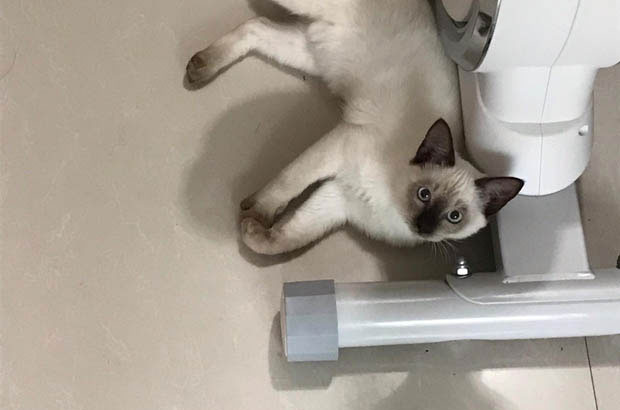Living with a Siamese while surrounded by friends and colleagues who own Ragdolls has offered me a unique perspective on these two popular cat breeds. From their temperaments and physical traits to their care requirements and costs, each breed presents a distinct set of characteristics that cater to different lifestyles and preferences. Through firsthand experiences and countless shared stories, I’ve come to appreciate the charm and quirks that make Siamese and Ragdolls both special in their own ways.
Temperament: Energetic Mischief vs. Graceful Calm
My Siamese, Leo, is a bundle of unbridled energy. He treats our home like an acrobatic playground, leaping from bookshelves to countertops with ease. His favorite pastime involves attracting attention—whether it’s by meowing insistently, batting at dangling objects, or playfully pouncing on my feet. He’s not shy about engaging in mock “fights,” nipping at my fingers with a gentle bite or swatting at toys with enthusiasm. Inevitably, his antics lead to minor mishaps: a knocked-over vase, a fallen pen, or a scattered stack of papers. But his charm lies in his ability to turn every moment into an adventure, demanding interaction and affection at every turn.

In contrast, my friends’ Ragdolls exude a serene elegance. These cats are known for their laid-back demeanor, often spending hours lounging in sunlit spots or curling up in cozy corners. While they do engage in occasional bursts of energy, their playfulness is more subdued compared to Siamese. A typical Ragdoll might lazily bat at a toy or stretch gracefully before returning to a peaceful nap. As they mature, usually around one year old, their activity levels decrease even further, making them ideal companions for those seeking a quieter, more relaxed feline presence.
Physical Traits: Sleek Agility vs. Fluffy Grace
Leo’s sleek, muscular build allows him to move with lightning speed and agility. His short coat, marked with distinctive pointed patterns, requires minimal grooming—just a quick weekly brush to keep it looking smooth. This simplicity is a blessing, especially for busy owners. However, his active lifestyle means he’s prone to knocking into objects during his energetic sprints, though his lithe frame usually allows him to avoid serious collisions.
Ragdolls, on the other hand, are a vision of fluff and elegance. Their long, plush coats are a defining feature, but they come with a price: excessive shedding. My friends often joke about finding fur on their pillows, clothes, and even in their food. Beyond shedding, the length of their fur can lead to messy situations, particularly after trips to the litter box. Despite these challenges, their fluffy appearance and graceful movements make them undeniably captivating.
Health and Care: Similar Sensitivities, Different Demands
Both Siamese and Ragdolls share a common vulnerability: sensitive digestive systems. A sudden change in diet can easily trigger diarrhea, emphasizing the need for consistency and high-quality food. However, their care requirements diverge significantly beyond nutrition.
Leo’s short coat means less time spent grooming, but his active nature demands ample mental and physical stimulation. Interactive toys, puzzle feeders, and regular play sessions are essential to keep him happy and healthy. In contrast, Ragdolls’ long coats necessitate daily brushing to prevent matting and hairballs. This grooming routine can be time-consuming but is crucial for maintaining their coat’s health and preventing discomfort.
Cost: Budget-Friendly vs. Investment-Worthy
When it comes to price, Siamese cats hold a clear advantage. Even with excellent pedigrees and top-notch breeding, Siamese kittens typically cost at least 10,000 yuan less than their Ragdoll counterparts. This price difference allows owners to invest more in high-quality food, toys, and veterinary care. While Ragdolls’ higher initial cost reflects their popularity and breeding standards, potential owners must also factor in ongoing expenses, such as specialized grooming products and frequent visits to the groomer.
Unexpected Moments: From Mishaps to Cuteness Overload
Living with these breeds also means encountering unexpected, often hilarious situations. Leo once got into a tussle with an unknown insect—perhaps a centipede or a spider—and ended up with a comical, swollen face. Despite his discomfort, his disheveled appearance was oddly endearing, a reminder of the unpredictable nature of pet ownership. Meanwhile, my friends have countless stories of their Ragdolls getting their fur caught on furniture or playfully crashing into walls during rare bursts of energy.
Conclusion: Choosing the Right Feline Companion
In the end, the choice between a Siamese and a Ragdoll boils down to personal preferences and lifestyle. If you thrive on constant activity, enjoy interactive play, and prefer a low-maintenance grooming routine, a Siamese might be your perfect match. For those who appreciate tranquility, adore fluffy aesthetics, and don’t mind dedicating time to grooming, a Ragdoll could be the ideal addition to your home.
Both breeds offer boundless love, unique personalities, and unforgettable memories. Whether it’s Leo’s mischievous antics or the Ragdolls’ serene presence, these cats remind us that the joy of pet ownership lies in embracing their individuality—furry mishaps, sensitive stomachs, and all.
Leave a Reply